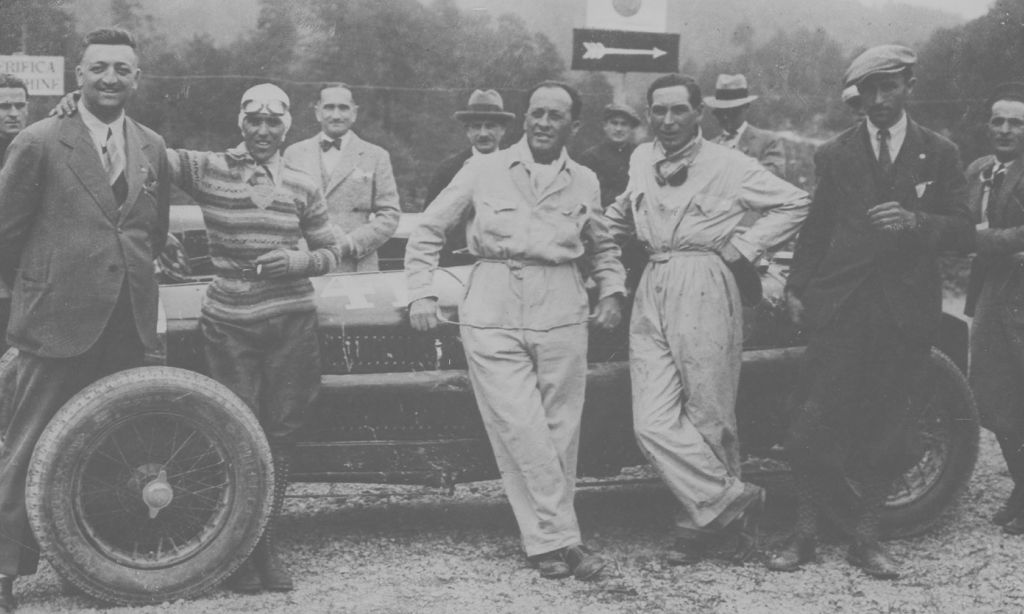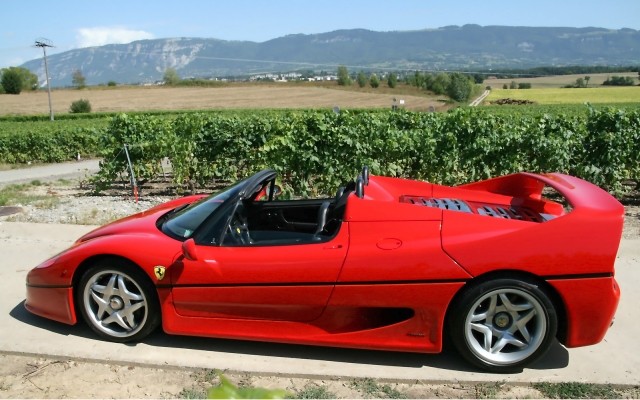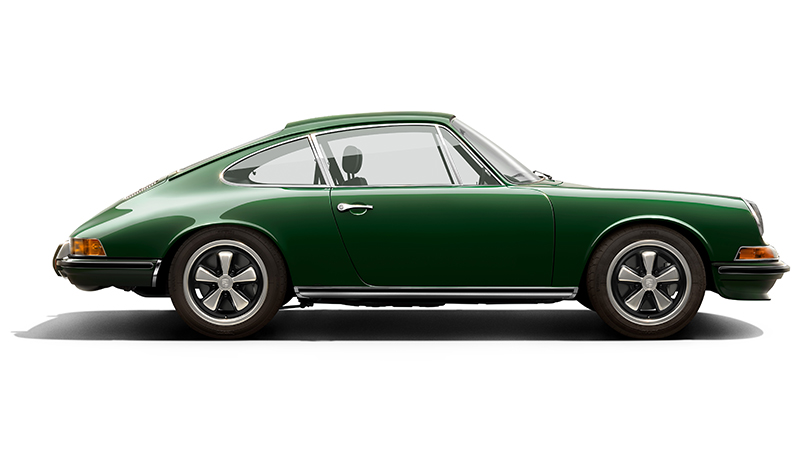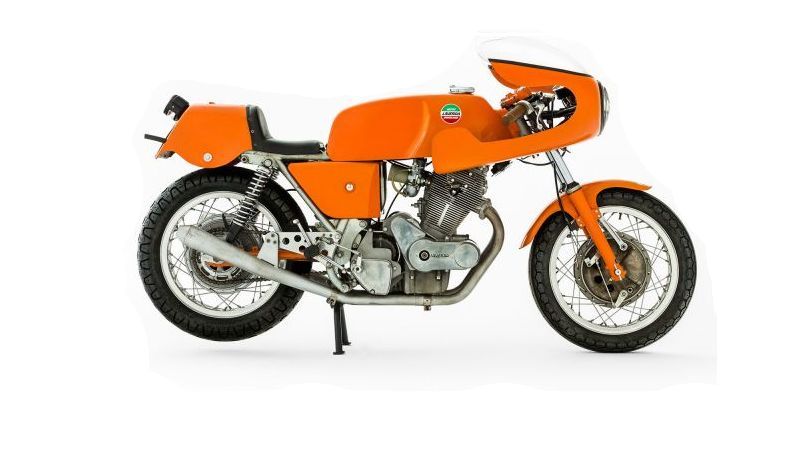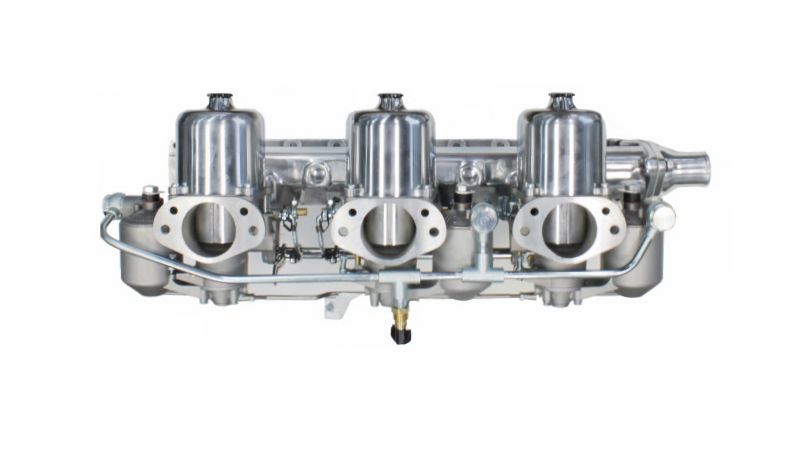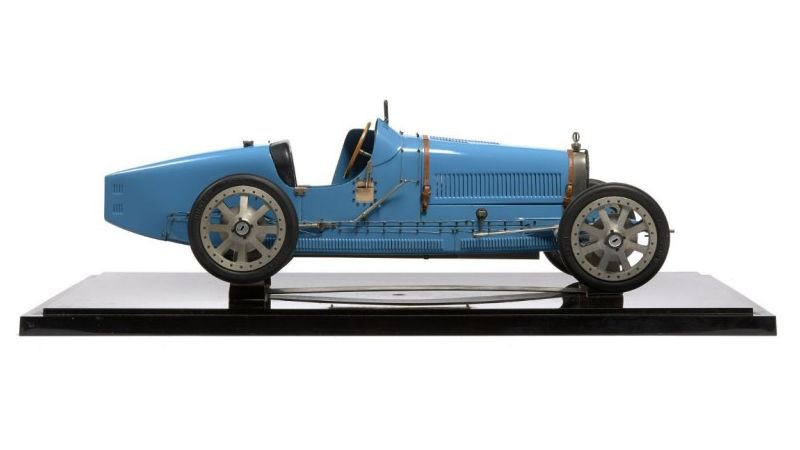Ferrari Motor Cars
example Ferrari successfully Sold
Il Cavallino Rampante
Just as an American youngster may want to be a baseball player or a movie star, his Italian counterpart may look to automobile racing or opera singing as the glamour professions.
The red blooded young Italian boy grows up dreaming of becoming another Tazio Nuvolari or Enrico Caruso. They were the heroes and each generation of boys has tried to follow in the footsteps of one or the other. Many succeeded, and Italian names appear regularly on racing programs and in opera casts.
But young Enzo Ferrari wanted to be both a race driver and an opera singer. This iron-willed youth followed these ambitions almost from the day of his birth in 1898.
His father, a music lover, was the proprietor of an ironworks and automobile shop in Modena, and Enzo heard the bass roar of engines as an infant in his cradle. The extraordinary voice of Enrico Caruso was a powerful influence, but so were the racing exploits of Nazarro and Lancia.
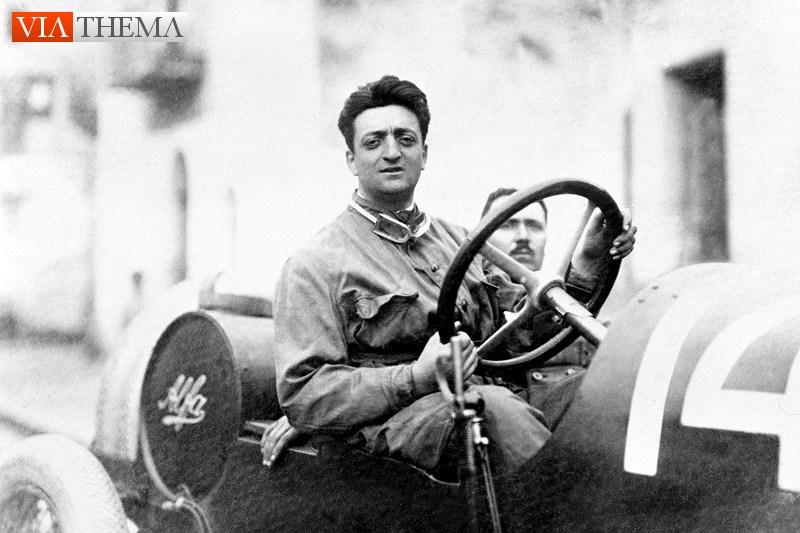
Enzo Ferrari behind the wheel of an Alfa Romeo Tipo 40/60 HP at the 1920 Targa Florio
His dual ambition did not survive too long. The music of the engines in his father's shop gradually replaced the music of the opera stage, and the staccato roar and screaming crescendo of high speed machinery became the accompaniment to his life.
For young Enzo, the contrapuntal sounds of wailing gears, shrieking tires, and percussive exhausts all blended into the great drama that is a Grand Prix race. Enzo Ferrari fulfilled his ambition. He did become a famous race driver and went on to produce a series of cars that still take center stage on the race courses of the world.
During World War I, Ferrari served as a mechanic and acquired another case of hero worship - Francesco Baracca the Italian flying ace. Baracca despatched thirty-five enemy opponents before crashing to his death. He became a symbol of courage and daring to Ferrari and this hero worship led to an important moment in his life.
After the war Ferrari became a driver on the Alfa-Romeo team, and following a crucial victory at Ravenna, the Baracca family presented him with a small charred plaque. This was one of the surviving remnants of their son's plane and it contained their family crest, a black horse rampant on a yellow shield.
The prancing horse was adopted by Ferrari as his personal symbol, and it appeared on all the cars he drove. Today it is to be seen on the bright red racing Ferraris and the touring cars he makes for the public.
As a driver for Alfa-Romeo, Ferrari soon became a steady winner and began to assist in the design of the racing machinery. He was a born organizer and leader as well as a fine engineer, and when Alfa-Romeo retired from racing in 1929 they subsidized a racing firm which was headed by Ferrari. This was the start of the famous Scuderia Ferrari.
Scuderia Ferrari, which inherited all of Alfa's racing equipment, was soon to establish the Alfa-Romeo as one of the foremost racing cars in the world. Under Ferrari's strict guidance a team of drivers headed by Nuvolari, Varzi, and Chiron began to win most of the important races in Europe. In addition, Ferrari's designing genius led the parent firm to construct finer and faster cars.
The ninteen-thirties were years of great success for the Scuderia Ferrari, but the tremendous Hitler-supported drive for racing supremacy gradually led Mercedes and Auto-Union to dominance on the race tracks.
The Alfa-Romeo directors decided to combat the Germans directly, and in 1938 they returned to the business of fielding factory teams. All of the Scuderia Ferrari racing equipment was returned to the factory where Alfa-Corse, the new racing stable was formed.
For the first time in many years Enzo Ferrari was without a racing team to manage. This might have been a blow to anyone else, but to the fiercely independent man from Modena it was just the necessary impetus. He immediately began to prepare his own racing team.
The first car that could be called a Ferrari was designed by Nardi. The engine was made up of two small Fiat power plants bolted together to form an eight cylinder block. The rest of the car was put together from various other automobile components. It was a sports-racing car and it ran in the 1940 Mille Miglia. This first Ferrari did not do very well, but it was the beginning of the line.
For seven years, mostly due to the war, nothing was heard of the Ferrari car, and then in 1947 the 125 Ferrari appeared in sports, competition, and Grand Prix versions. It was designed by Giacchino Columbo, the same man who built the famous 158 Alfa-Romeo.
Ferrari was back in racing with a vengeance. He was out to beat his old sponsor, and he had started by hiring their best designer. Then he added a crack team of drivers, including Ascari, Farina and Sommer. But the Ferraris still could not win. They came in second or third, but never in front.
The determined Commendatore shook up his organization and hired Aurielio Lampredi as his engine designer. This time the strategy was to build a car that could run a race without refueling. Nineteen fifty-one was the year of triumph. At Silverstone in England, Gonzales in a new Ferrari trounced Fangio who drove an Alfa-Romeo.
The Ferrari was not only faster but the fuel stop which Fangio had to make completely lost the race for Alfa-Romeo. That year, perhaps because of Fangio's supreme skill, Alfa-Romeo won the manufacturer's championship, but it was a victory barely eked out, with Enzo Ferrari's long-snouted, frighteningly fast machines on the tail of every Alfa-Romeo. Alfa-Corse retired, glad to have won. But the handwriting was on the wall and it spelled Ferrari.
In 1952 and 1953 Scuderia Ferrari mopped up on almost every track, winning the championship each year. But Maserati and Mercedes now began to compete in earnest. It was obvious that Ferrari needed new machinery. So Lampredi designed a radical looking car with the gas tanks located amidships, one on each side of the driver.
This racer with its bulging sides was named the Squalo, meaning Shark. Its balance was superb. With the tanks located in the middle, the weight distribution never changed as the fuel level went down. But the first appearance of the Squalo was a disaster. At Syracuse in 1954, Gonzales was blasting around the course when he noticed a car in flames.
Hawthorn, in another car, had smashed into a wall and caught fire. He managed to extricate himself from the car and jumped over the wall to safety. Gonzales stopped and ran to the burning wreck hoping to save the driver. With great danger to himself he searched the tangled metal but found no pilot. Unfortunately his Squalo rolled gently into the fire and became a blazing mass of gasoline and metal.
Enzo was not happy with the Squalo model. It was fast but not reliable. A successful Supersqualo was produced, but the basic designs were already outmoded. Mercedes rejoined racing in 1955 and in their characteristic fashion won everything. Maserati was not far behind, and Ferrari realized that he needed new blood once again. It was forthcoming.
Lancia retired from racing and handed all its material to Ferrari. Fiat donated money. This was not charity. It was Italian national pride. It was unthinkable that other countries should defeat their bright red speedsters, and Ferrari seemed to offer the best chance that Italy had. Results came rapidly. A new man Ing. Chiti took over engine designing, Juan Manuel Fangio was hired as number one driver, and 1956 saw Ferrari as the world champion car once more.
Since that time, Ferraris have been in a dominant position in every form of racing. Each year brings new designs. The Dino models, named after Ferrari's son, have been successful everywhere. The Testa Rossa is perhaps the finest general purpose competition car made anywhere. It has a lean, sleek appearance, with a completely functional body, like that of an airplane. It handles superbly, has fantastic durability, races like a scalded cat and, incidentally, costs well above twenty thousand dollars.
Everything that Enzo Ferrari learned from racing he applied to touring cars. But he applied the lessons directly. The touring Ferraris have only a slightly detuned racing engine, and they do not come from an assembly line. They are built practically by hand, and each one has differences.
The yearly output is small, perhaps four hundred cars and each car is assembled carefully, tested and adjusted to a fine degree. These Gran Tourismo coupes are fast; some can do 160 mph and hold the road with racing car tenacity. The bodies are designed by men like Farina, Vignale, and Bertone and the interior appointments are exquisite in taste. Big leather bucket seats hold driver and passenger in extreme comfort, and the dual-ignition V-shaped engine offers smooth and breathtaking power.
These cars are also quite expensive. It is possible to pay over twelve thousand dollars for a Gran Tourismo Ferrari, but the owner can take great pride in the precision workmanship, the elegant appearance, and the close kinship to the screaming red racers that do so well in competition.
Commendatore Ferrari never fulfilled his boyhood ambition to become another Caruso, but the engines mounted under the shield of the prancing horse sing a mighty aria.
We are looking for the following cars. If you do have any of the below listed vehicles - and you are ready to sell - please Contact Us.
| Ferrari 246 |
|---|
| GT Berlinetta |
| GT Spyder |
| Ferrari 250 |
| Export |
| Europa |
| GT Boano |
| GT Ellena |
| GT Europa |
| GT Interim |
| GT Lusso |
| GT SWB |
| Gt Tour de France |
| GT Coupé Pininfarina |
| GT/E 2+2 |
| GT Cabriolet |
| GT California Spyder |
| Ferrari 275 |
| GTB |
| GTB/C |
| GTB/4 |
| GTB/4 NART Spyder |
| GTS |
| Ferrari 308 |
| GTB Vetroresina |
| GTB |
| GTBi |
| GTB Quattrovalvole |
| GTS |
| GTSi |
| GTS Quattrovalvole |
| Ferrari 328 |
| GTB |
| GTS |
| Ferrari 330 |
| America |
| GT 2+2 |
| GT Coupé |
| GT Spyder |
| Ferrari 365 |
| California |
| GT 2+2 |
| GT Coupé |
| GT Spyder |
| GTB/4 Daytona |
| GTC/4 |
| Berlinetta Boxer |
| Ferrari 512 |
| Bb Carburatori |
| BB Iniezione |
| Testarossa |
| Super Cars |
| 288 GTO |
| F40 |
| F50 |
| Enzo |
| LaFerrari |
| Race Cars |
| 308 GT/M Michelotto |
We buy, sell, broker, locate, consign and appraise exceptional classic, sports and collector Ferraris'
Contact us when you are serious about buying a fine Ferrari Motor Car or to arrange a free and confidential valuation with a view to selling.
